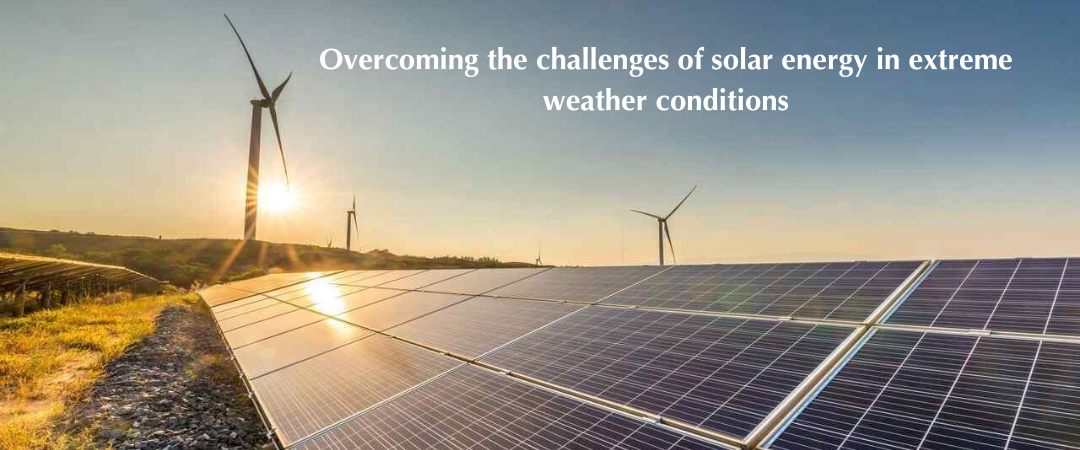


Attributed to Naresh Mansukhani
Remember last month, when Delhi’s heat broke all historic records?
Or think back to the devastating Kerala floods of 2018, where thousands of people lost their lives and livelihoods.
These events are just glimpses into a troubling pattern—over the past decade, India has been grappling with an increasing frequency and intensity of extreme weather events. The storms are lingering longer, the heatwaves are becoming more relentless, and wildfires are raging with unprecedented intensity.
According to reports by the Centre for Science and Environment (CSE), our nation experienced extreme weather events on 235 of the 273 days, or a little over 86% of the days from Jan 1 to Sep 30, 2023. These harsh conditions have affected thousands of individuals in every state and union territory.
But the story doesn't end with the weather itself. The ripple effects of these extreme events reach far and wide, affecting not just natural systems but also our critical energy infrastructure.
Take solar panels, for example—a cornerstone of the renewable energy movement. These panels are designed to work best at around 25°C, converting sunlight into electricity most efficiently when temperatures range between 15°C and 35°C. However, they are delicate, made of glass, silicon cells, and protective coatings, and are vulnerable to harsh conditions. The wind's sheer force can tear panels from their mountings, making it dangerous for people who might be in the way. Even if they stay put, strong winds can warp their structures, diminishing their efficiency and lifespan.
On 9th April 2024, the world’s largest floating solar plant, expected to produce 600MW of power, built at the backwaters of Omkareshwar Dam, Madhya Pradesh was destroyed by a deadly summer storm. Waves caused by strong winds tore out hundreds of solar panels, breaking them and causing damage to the undersea cables that connected the devices to the power grid.
Moreover, heavy rainfall during such events can exacerbate the situation by flooding electrical components, leading to short circuits and further compromising the power generation systems. The combination of wind and water can create a perfect storm of damage, leaving power plants inoperable for extended periods and causing widespread blackouts. In 2023, 13 days-long cyclone Biparjoy hit the eastern coast, wreaking havoc across several regions. One of the most severely impacted areas was Gujarat, where nearly 1,000 villages experienced prolonged blackouts. These incidents underscore the vulnerability of renewable energy infrastructure to the escalating severity of climate-related weather events, highlighting the urgent need for resilient designs and improved protective measures in the face of growing environmental challenges.
Mitigating climate change is essential for preserving the planet, and advancing solar technology plays a pivotal role in this effort. Beyond offering clean and sustainable alternatives to fossil fuels, the solar industry is committed to enhancing its environmental benefits through the use of eco-friendly materials. Materials such as aluminium frames and tempered glass are chosen for their durability and recyclability and sustainable semiconductors like Copper Indium Gallium Selenide (CIGS) and emerging technologies such as perovskite solar cells are making significant strides. These innovations not only enhance efficiency but also facilitate the recovery and reuse of valuable elements, further reducing the carbon footprint. The industry is also focusing on adopting lead-free solder and non-toxic encapsulation materials, ensuring that all components can be safely recycled or disposed of at the end of their lifecycle.
In parallel, efforts to improve the resilience of photovoltaic (PV) power plants are underway, with technologies like passive stow algorithms enhancing their ability to withstand extreme weather conditions. These algorithms use weather sensors and forecasting models to automatically adjust the panel angles based on real-time data, reducing the need for manual intervention during severe weather events. Furthermore, a research team from Amrita Vishwa Vidyapeetham in Faridabad has developed solar cells using living algae. This approach not only reduces reliance on non-renewable photovoltaic materials but also integrates biological systems into energy production, promising a new dimension of sustainability. As research and development continue, such innovations are poised to revolutionize the energy landscape, making solar power an even more vital component of a sustainable future.